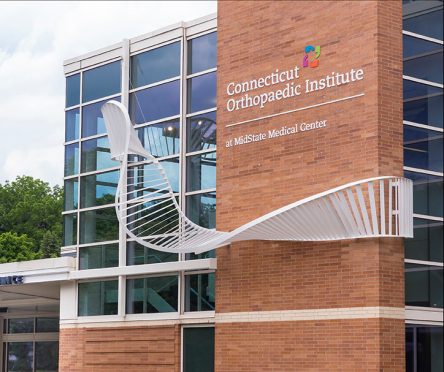These shoes were made for walking—or were they? When it comes to foot health, it turns out that not all shoes are created equal.
“You need to wear the shoe that fits your foot, but you can’t change your foot to fit the shoe,” says Megan Wolf, MD, an orthopaedic surgeon with the Connecticut Orthopaedic Institute at MidState Medical Center.
To keep you on the right track, Dr. Wolf highlights five types of shoes to reconsider and top tips for finding the right fit.
1. Heels
We know the perfect pump can make the outfit, but there’s some fine print.
“Very high-heeled shoes with pointed toes can lead to pressure of the forefoot,” explains Dr. Wolf. “This pressure may lead to worsening bunions, hammertoes, and neuromas (nerve pain) as well as metatarsal head (forefoot) pain.”
Wearing heels every day or for long periods of time can make the foot issues even worse. So while it’s tempting to prioritize style, considering saving heels for special occasions or look for options with a lower, more supportive heel.
> Related: 6 Reasons High Heels Are Bad For Your Health
2. Minimalist running shoes
Before you lace up your minimalist running shoes and hit the pavement, you may want to reconsider.
“Minimalist running shoes can strain your metatarsals more if you are a high mileage runner, causing pain and metatarsal stress fractures,” cautions Dr. Wolf.
These shoes often lack cushioning and arch support, which can exacerbate underlying foot and ankle issues.
If you’re committed to using minimalist shoes, be sure to transition gradually and safely.
3. Flip flops
They may be cute and convenient, but your feet may not love your flip flops as much as you do
“Flip flops don’t support or protect your feet,” says Dr. Wolf. “It’s easy to stub your toes, sometimes causing fractures.
Their loose fit can also lead to tripping, stumbling or ankle twists, which may result in more serious injuries beyond just your feet.
> Want more health news? Text StartHere to 85209 to sign up for text alerts
4. Slides
Slides have many of the same risks as flip flops including toe stubs, tripping or ankle injuries.
“Like flip flops, slides offer little protection and can easily slip off, increasing the risk of injury,” says Dr. Wolf.
It’s best to save slides for lounging or casual use, and go with a sturdier option if there’s more walking involved.
5. Canvas shoes
Canvas shoes are a popular choice for casual footwear with brands like Converse and Vans filling closets.
And while they’re not the worst shoes for your feet, they can cause some problems.
“They’re not always an issue,” says Dr. Wolf. “But they often lack the support you need and can interfere with normal walking due to their stiff, flat sole.”
If you plan to walk or stand for long periods of time, consider adding insoles to better support your feet.
5 tips for finding your perfect shoe.
The right shoes protect your feet and support daily activities, but the wrong pair can lead to issues.
“Poorly fitting shoes can aggravate bunions, hammertoes, and even lead to ulcerations in people with diabetes or neuropathy,” explains Dr. Wolf. “Wearing the wrong shoes for your activities can also result in injuries like ankle sprains.”
If finding the perfect fit feels overwhelming, try these tips:
- Have your feet measured and choose shoes that fit the larger of your feet.
- Don’t rely on size alone—make sure the shoe shape matches your foot. For example, if you have a bunion, choose a wide-toe box shoe.
- Always stand and walk in the shoes to make sure they are comfortable. (Run in them, too, if that’s what you’ll be doing!)
- Choose shoes designed specifically for your activity. Running shoes, cross-trainers and walking shoes each provide different types of cushioning.
- Make sure the shoe flexibility matches your foot and ankle needs. If you have midfoot arthritis, a stiff shoe will be more comfortable than a flexible one.
Need help taking the first step?
Don’t rely on “breaking in” new shoes to fix discomfort.
“They should feel comfortable on day one,” says Dr. Wolf. “There shouldn’t be any rubbing or pain when you first put them on, and never try to force your foot into a shoe that doesn’t fit.”
If pain persists despite shoe modifications, don’t ignore it.
“Schedule a visit with your local orthopaedic foot and ankle surgeon,” says Dr. Wolf. “We’re here to answer your questions, perform a thorough evaluation and help you prevent pain and injury.”



